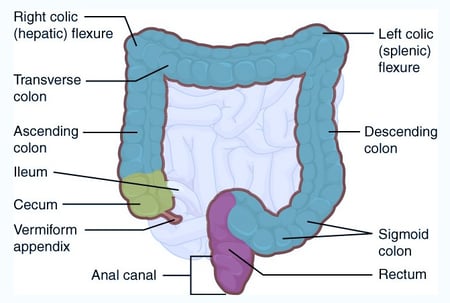SSA Detection: The Key to Preventing CRC?
by Marybeth Spanarkel, M.D., on August 17, 2018
Observational studies indicate that colonoscopy lowers colorectal cancer (CRC) rates and mortality in the general population. In support of these findings, a large-case control study showed that the procedure can significantly reduce the incidence of CRC and CRC-related mortality. However, colonoscopy may not be optimally effective for right-sided lesions. This might be due, in large part, to sessile serrated adenomas (SSAs).
SSAs are mucus-capped, flat or depressed lesions that frequent the right colon. They are biologically different from other polyps, with distinct endoscopic, pathological, and molecular profiles. Their appearance makes them difficult to detect, so they are often missed. In fact, a fair number of endoscopists overlook a large percentage of these serrated polyps. In an interview in Gastroenterology & Hepatology, Dr. Douglas Rex noted that flat lesions are missed on a regular basis. “Some endoscopists likely miss a substantial number, if not the majority.”

And when they are found, they are more difficult to remove completely. Because SSAs are typically flat, during snare closure the snare loop can slide over the polyp rather than capture it. In addition, because the borders of these polyps are hard to pinpoint, there is a risk of incomplete polypectomy.
Why SSA Detection Matters
Unfortunately, these SSAs are likely contributing to interval cancers, which are more often found on the right side of the colon. A recent article in the Cleveland Clinic Journal of Medicine stated, “It is believed that sessile serrated polyps may be the cause of a substantial number of ‘interval’ colorectal cancers—i.e., cancers that occur after colonoscopy but before the next scheduled examination.”
Clearly, efforts should be made to improve adenoma (particularly SSA) detection in the right colon, but what is required to make this happen?
First: Hone Technical Skills
These include:
- Increasing adenoma detection rate (ADR) with a specific focus on right-sided SSAs.
- Improving polypectomy techniques by, for instance, employing a staged loop closure (ensuring that the scope tip, snare sheath, and loop are properly positioned before beginning loop closure and adjusting the sheath position and scope angle during closure).
- Decreasing the rate of incomplete colonoscopies (rates vary from 4% to 25% and are associated with higher rates of interval proximal colon cancer).
Second: Employ Technology
One way to increase ADR is to improve visualization of the colon. Numerous technologies address this requirement, including wide viewing scopes, panchromoendoscopy, scope caps that pull back mucosal folds (Endocuff and EndoRing), and balloon-assisted colonoscopies. Each has distinct advantages and limitations. For instance, the cost of some of these solutions is substantial.
Third: Use a Simple Medical Device
In addition to scoping technology, a simple, cost-effective device (ColoWrap) has been shown to improve SSA detection in the ascending colon and cecum. By mitigating looping, it shortens scope insertion time and allows for a more controlled withdrawal.
.png?width=400&name=colowrap_6047%20(1).png)
To win the battle against SSAs (and CRC in general), endoscopists should take advantage of all available strategies and record and analyze their own data. In this way, screening colonoscopies can be made more effective, offering better protection to the “underserved” right colon.


